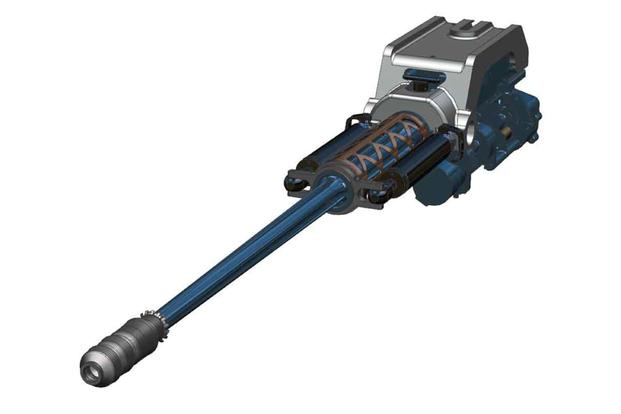Northrop Grumman announced Wednesday that it is building a new 20mm cannon for the Army's Future Attack Reconnaissance Aircraft -- one that it says is far more accurate than the AH-64 Apache's 30mm chain gun.
The new chain gun, named the Sky Viper, will be similar to the M230 30mm cannon, which Northrop manufactures for the Apache, but will feature new technologies to make it more accurate and produce less recoil, Quinn Canole, director of the Guns Operating Unit at Northrop Grumman, told defense reporters Wednesday.
"This cannon is going to offer superior accuracy based on the proven, reliable, accurate technology like the M230 cannon, while incorporating these more modern technologies," Canole said.
Northrop is working with the U.S. Army Development Command Armament Center on the effort under a rapid prototyping agreement, Canole said. General Dynamics is also developing the XM915 multi-barreled gatling gun for the effort.
Northrop's new cannon could arm the Future Attack Reconnaissance Aircraft, or FARA, which is part of the Army's Future Vertical Lift effort. The service selected Lockheed Martin's Raider X coaxial helicopter and Bell's "360 Invictus" single-rotor concept last March for the second phase of the program, which calls for the companies to design, manufacture and test their prototypes.
FARA is meant to fill a capability gap left by the retirement of the OH-58D Kiowa Warrior helicopters.
The Sky Viper has completed the Army's initial design reviews, and Northrop has conducted functional testing using a non-firing prototype, Canole said.
The company is in the process of building the first production prototype, which will transition into live-fire evaluation in the late spring or early summer when it is handed over to the Army for additional testing, he said.
"One of our core focuses is really on accuracy of the weapon and how it gets controlled," Canole said.
One way to improve the accuracy is to produce a high rate of fire, he added.
While he didn't offer specific details, Canole said the Sky Viper's "rate of fire will be improved and increased" over the Apache's cannon, which fires approximately 625 rounds per minute.
"And really what that is going to help with ... is that the higher firing rate is going to reduce the distance between each round fired," Canole said. "Typically, they are fired in a burst, and the tighter the pattern, the closer the rounds are going to hit to the target.
"Where gatling guns are primarily geared toward area suppression, ours is geared toward a high degree of accuracy, so essentially fewer shots fired and more shots hitting the target."
Better accuracy will help keep the overall weight of the weapon system as light as possible, Canole said.
In addition to the weight of the gun itself, the ammo handling system, feed chutes and ammunition add weight.
"By improving the accuracy of the weapon, we end up reducing the stowed ammo count, which in turn is going to significantly reduce the load on the aircraft," Canole said.
The Sky Viper is also being designed to produce less recoil, resulting in less "wear and tear" on the aircraft, he said.
-- Matthew Cox can be reached at matthew.cox@military.com.
Related: Down to 2: Aircraft Will Compete to Replace the Army's Apache, Kiowa












